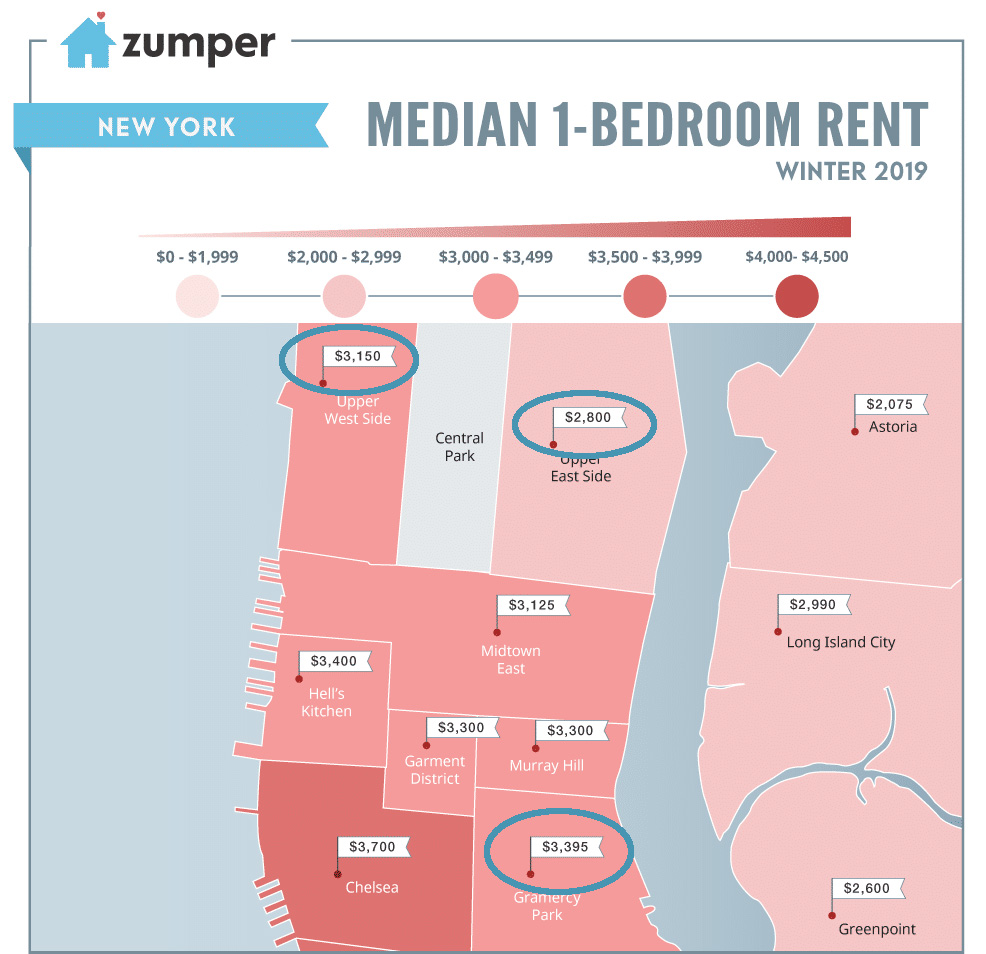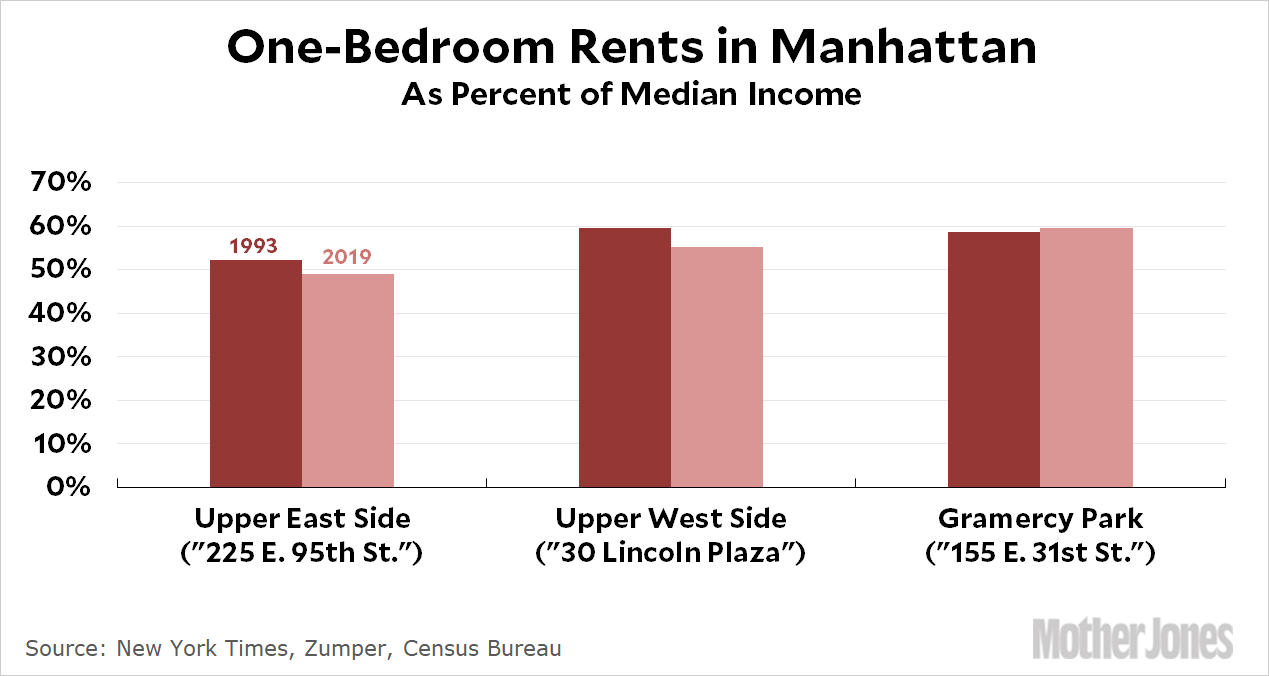
I need some help here from New York City natives. Here are a few average rents for one-bedroom apartments recorded in a 1993 New York Times article:
At the Windsor Court, a 700-unit building at 155 East 31st Street, a one-bedroom unit that rented for…$1,650 in 1993, an 8 percent rise….At the Normandie Court at 225 East 95th Street, rents were…$1,465 in 1993….On the West Side, at 30 Lincoln Plaza, a large building near Lincoln Center, a one-bedroom rose…to $1,675.
Here’s a map from Zumper that alleges to show median rents for one-bedroom apartments today:

According to the Census Bureau, the median household income in the Northeast has increased from $33,747 in 1993 to about $68,000 today. Plugging in the 1993 and 2019 rent numbers produces this:

This is only three data points, and rents can vary within the boundaries of large neighborhoods, so this could be off by a few percentage points here and there. Generally speaking, however, it suggests that rent as a percentage of income has either stayed flat or maybe decreased a bit over the past 25 years in Manhattan.
Are there any problems with this data? Is Zumper full of shit? Is rent control too prevalent to provide an accurate picture of market rents? Or is this a reasonable snapshot of Manhattan apartments in 1993 and 2019?















